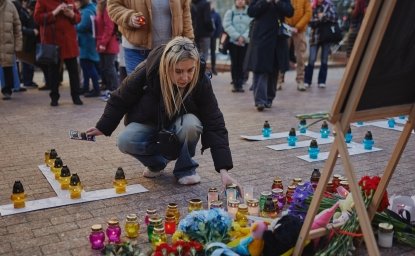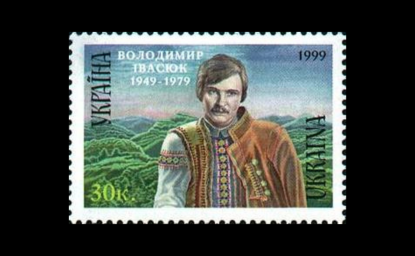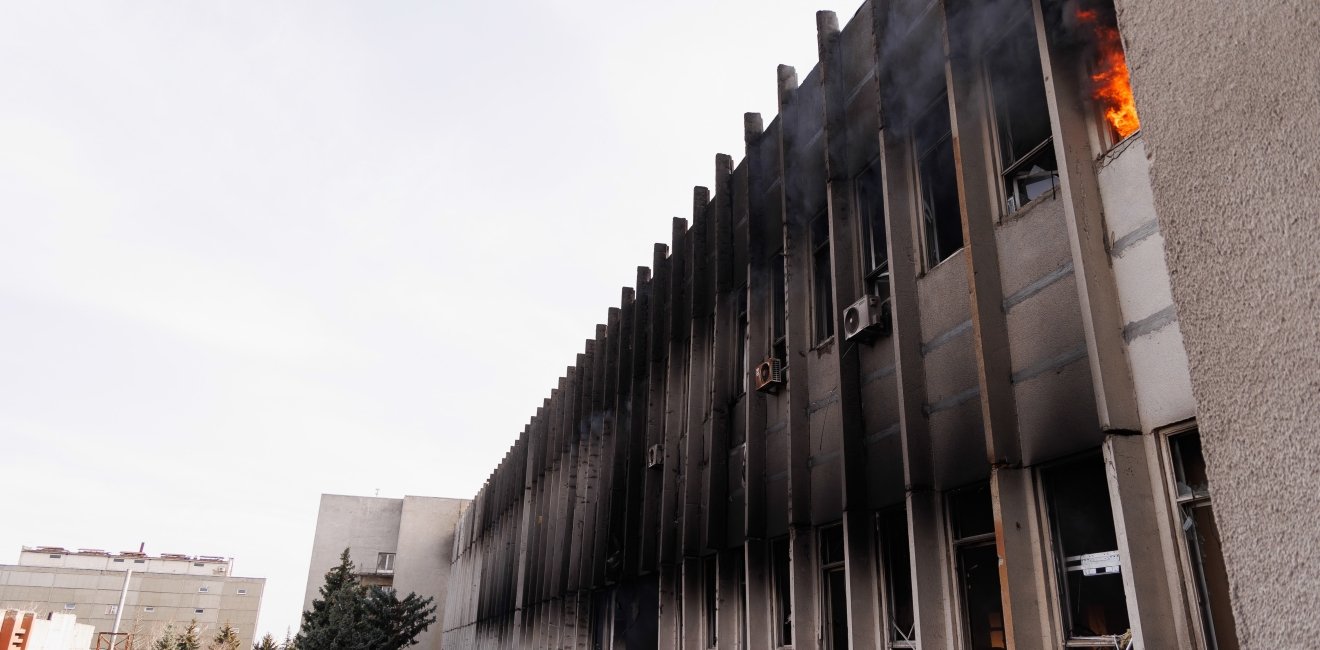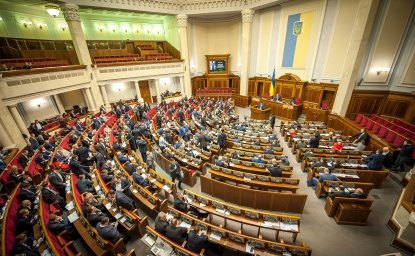
A blog of the Kennan Institute
As Ukraine entered the third year of the full-scale war, the situation appeared to have reached a stalemate, despite heavy fighting at different points on the front lines. In mid-February, with Ukrainian supply routes targeted and the troops running short of ammunition, Ukrainian forces had to withdraw from Avdiivka, the scene of some of the most intense fighting in the past half year. However, the Ukrainian army did succeed in destroying much of the Russian Black Sea fleet and airplanes. Ukrainian security services launched successful attacks on Russian oil refineries deep inside Russia, and Russian volunteers fighting on the side of Ukraine continued to conduct military operations in the regions along the border with Ukraine.
Russia ramped up its disinformation campaign in Ukraine and Europe, striving to sow doubt among Ukrainians and distrust in the Ukrainian government both domestically and internationally. In late March it renewed its massive attacks on Ukraine’s energy infrastructure, causing serious damage. It also intensified attacks on civilian residential buildings.
Future military aid to Ukraine remained a major topic of discussion with Ukraine’s international partners. Nonetheless, during the quarter Ukraine signed security cooperation agreements with G-7 members and other states, and the European states made concerted efforts to provide critically necessary artillery rounds to the Ukrainian army.
1. ROLLOUT OF THE WAR
In February 2024, Ukraine entered the third year of combating Russia’s wide-scale invasion, marking ten years of war since Russia annexed Crimea in 2014, later unleashing war in the Donbas. The war has changed the country and its economy drastically, though the changes that have occurred over the decade of war differ from those experienced in the two years of the full-scale war.
General Developments during January–March
In the first quarter of 2024, heavy fighting continued, but without notable changes to the front line. Throughout the quarter the Russian Air Force (RuAF) continued its intense offensive in all directions, expanding on bombing campaigns it had started in October of last year. The Ukrainian Armed Forces (UAF) shifted to defensive actions to exhaust the Russian forces. However, the Ukrainian army had to withdraw from some positions because of a lack of weapons and intense pressure from the RuAF.
Russia used phosphorus and chemical weapons during several hard-fought battles. The fiercest Russian attacks were directed at Avdiivka, Donetsk oblast, where the situation resembled the one in Bakhmut last year. In mid-February, lacking ammunition and seeing their supply routes being cutting off, the Ukrainian forces stepped back from their positions in Avdiivka. One month later, the UAF command reported that the situation in the country's East had stabilized. Ukraine stepped up efforts to fortify three major defensive lines.
Sea and air operations advances. Though facing a deadlock in land operations, Ukraine realized significant advances in destroying Russia’s Black Sea Fleet and shot down several Russian military planes over Ukraine. During the quarter, Ukrainian forces sank five Russian military ships, including three landing ships. As of the end of March, Russia had lost almost all landing ships in the Black Sea. More than a third of the Russian fleet has been disabled, including a submarine. Ukrainian-designed kamikaze sea drones have become the main weapons used in attacking the Russian fleet. To save its Black Sea Fleet, Russia started withdrawing its major vessels from ports in occupied Crimea.
Ukraine also shot down Russian military jets that were bombing regions close to the front lines. To illustrate Ukraine’s advances in this arena, during just two weeks in late February and early March, Ukrainian forces downed fourteen Russian military airplanes. In addition to Su-34 bombers (used to attack frontline settlements with guided aerial bombs) and modern Su-35 fighter jets, Russia lost two A-50 planes, which together cost about $700 million (they are outfitted with an airborne early warning and control system, designed to detect air defense systems and coordinate targets for Russian fighter jets). Russia had only a few of these planes before the invasion, so the loss of two represents a setback. The RuAF is probably ready to tolerate high losses to maintain the offensive.
Russian refineries under attack. In the first quarter of the year, more than a dozen Russian oil refineries deep inside the country came under drone attack by Ukraine (some of the targets were located as far as 560 miles from the border with Ukraine) The Security Service of Ukraine formally admitted to the attacks, defending them on the grounds that refineries are legitimate targets because they provide resources to run the Russian war machine. (Russia’s income from oil sales remains high despite international sanctions.) Ukraine also attacked Russian factories producing weapons.
Analysts have described the strikes on Russian oil facilities as a new phase of the war. The attacks have affected Russia’s refining capabilities. Although Russia has not provided official statistics, the country is believed to have lost about 10 percent of its refining capacity. Because Russia's domestic gas supplies are now diminished, Russia is considering importing gas from Belarus.
Contributions of Russian volunteers to the war effort. Russian volunteers fighting on the side of Ukraine under the corps names Freedom of Russia, the Siberian Battalion, and the Russian Volunteer Corps started military operations on the border regions with Ukraine, in Belgorod and Kursk oblasts. Similar operations took place in May 2023, but now the scale of the military actions is bigger and their duration longer. The operations began before the elections in Russia and continued after them. The anti-Kremlin volunteer military units clashed with Russian servicemen and even claimed to have captured some Russian troops.
Russia intensified its attacks on civilian targets and critical infrastructure, especially in the frontline regions, notably Kharkiv and Sumy oblasts. This may be an attempt to increase pressure on Ukraine while the delivery of military aid and supplies to Ukraine is slowed or suspended, especially the delivery of supplies from the United States.
In addition to drones and missiles, Russia started using its new Zircon hypersonic missiles and 1,500-kg (3,300-pound) aerial bombs to target Ukrainian cities. The lack of ammunition, especially air defense missiles, may play a critical role in Ukraine’s ability to protect the frontline areas and critical infrastructure across the country; a continuation of massive Russian attacks, in particular attacks using North Korean missiles and Iranian drones, could plunge Ukraine into a new stone age.
Engagement of Russia’s Allies
At the beginning of the year, it became evident that North Korea was supplying Russia with missiles, including ballistic missiles. Kyiv said that as of mid-March, Russia had used about fifty of these against Ukraine. The DPRK-origin missiles were found to contain U.S. and European parts.
The North Korean defense minister said the country might also supply tactical guided missiles to Russia. According to the official, the country’s military factories are working at full capacity. Russia uses DPRK artillery shells. Since September 2023, North Korea has delivered more than 10,000 containers of munitions or munitions-related materials to Russia. Russia started supplying oil to the DPRK in exchange for weapons.
Russia is negotiating with Iran as well to receive ballistic missiles. Foreign media have reported that Iran delivered hundreds of these missiles, but Ukrainian intelligence denies this.
Belarus earlier was a key supplier of ammunition to support Russia’s war. Though its stocks are probably exhausted by now, it remains one of Russia’s important allies. Belarus is now building a new military town twenty-five miles from the border with Ukraine that will house both Russian and Belarusian troops. The combined forces started joint training in the Belarusian facility in March.
Though Russia relies heavily on ammunition supplies from its allies, the country is still capable of producing its own weapons. For instance, one of the Russian missiles that hit Kyiv in 2024 was made in the summer of 2023. Russia is also pouring money into developing its own drone systems, with the combat drone Okhotnik-B expected to go into production in Novosibirsk later this year.
Russian Disinformation Campaigns and Cyberattacks
Russia continued its disinformation campaign in Ukraine, hoping to undermine trust in the government and sow suspicions abroad. The clear goal is to weaken international support for Ukraine. These efforts are likely to ramp up in 2024 because many countries are holding elections, and policies regarding aid for Ukraine and the reception of Ukrainian refugees could shift drastically. Under normal conditions, Ukraine would also be holding elections.
The curtain continues to be pulled back on Russia’s disinformation efforts. The Washington Post published material on Russia’s huge campaign to spread distrust of the government and societal despair in Ukraine, and the German Marshall Fund issued a report on Russia’s use of Polish media to spread the Kremlin’s lies about Ukraine. According to Security and Defense Secretary Oleksii Danilov, Russia has significantly stepped up its disinformation campaigns, issuing or spreading 166 million disinformation posts every week about Ukraine on social media in a global effort to manipulate thinking on Ukraine.
According to Ukrainian intelligence sources, Russia is engaged in a massive disinformation campaign code-named Maidan-3 and designed to promote antiwar protests and destabilize the country, with the ultimate goal of removing President Zelensky from his leadership role. The campaign is expected be most active during March–May, and persons inside Ukraine are believed to be involved.
Deep-fake videos play a prominent role in Russian propaganda. For instance, a deep-fake video of former president Petro Poroshenko allegedly making incendiary statements about President Zelensky was targeted to Ukrainian soldiers. Videos allegedly showing Russians attacking Ukrainian military training camps or Ukrainian special forces shooting civilians are widely circulated; such misrepresentations are unfortunately becoming commonplace.
Russia has also continued cyberattacks against Ukrainian media, authorities, and critically important companies, including one of the biggest banks, the biggest state-owned oil and gas company, Naftogaz, POW Coordination Headquarters, Ukraine's Education Ministry website, and so on. Hackers have been sending Ukrainian soldiers messages containing malware. In 2023, the number of cyberattacks against Ukrainian organizations increased by 15.9 percent compared to 2022, reaching an overall number of 2,543 documented cases.
Even though ISIS took responsibility for the terrorist shooting in Moscow’s Crocus concert hall in March, and Western intelligence said it has proof that Ukraine did not organize it, Russian top officials, including Vladimir Putin, tried to link it to Kyiv, while constantly changing the narrative. The media reported that some in Putin’s circle do not see any link to Ukraine. It’s possible the Kremlin will try to capitalize on the attack to mobilize Russian society against Ukraine. The head of the Russian Federal Security Service (FSB) blamed the United States, the UK, and Ukraine as instigators and enablers of the attack.
Energy Terrorism and Other Attacks on Critical Infrastructure
From mid-September 2023 to the end of the year, Russia did not succeed in damaging Ukraine’s energy infrastructure, though not for lack of trying. The number of drones Russia launched during October–December 2023 broke records since the invasion. Most were brought down by Ukrainian air defense units before they could inflict damage, so we do not know their intended targets.
This picture changed with the new year. Starting in early 2024, Russia focused on attacking energy infrastructure in the frontline regions, which are generally the easiest to reach. Despite the damage this caused, the power systems continued to operate in a relatively stable mode.
On the night of March 22, Russia launched a massive attack on the Ukrainian power system, using drones and ballistic and cruise missiles. The largest such attack since the start of the full-scale invasion, it involved sixty Shahed drones and almost ninety missiles of various types. Power production and transmission facilities in Kharkiv, Zaporizhzhia, Kryvyi Rih, and Dnipro were targeted. Russians hit the biggest Ukrainian hydropower plant, DniproHES, and the dam of its water reservoir on the Dnipro river in Zaporizhzhia oblast; two other big hydropower plants were damaged in the following days.
The biggest private-owned Ukrainian energy company, DTEK, reported that 80 percent of its capacities had been damaged during the attacks by the end of March. In Kharkiv, all thermal power plants and substations were destroyed in the last week of March. The state-owned Centrenergo lost its biggest power plant in Kharkiv oblast. The major attack was followed by attacks in ensuing days.
Crimes against Civilians and Attacks on Civilian Infrastructure
In the first quarter of the year, Ukraine faced more Russian drone and missile strikes on multi-block residential buildings, with many civilians injured and killed—in some cases dozens in a single attack. Occasionally multiple cities were attacked simultaneously. Big city targets included Kyiv, Kharkiv, Kherson, Odesa, Mykolaiv, and Sumy. In addition, civil infrastructure in the regions under Ukrainian control and well inside the front lines was regularly attacked, sustaining damage. Since March 11, Russia has been shelling the borders of Sumy oblast, mostly using guided aerial bombs, artillery, and Lancet attack drones.
In general, from the start of the year, Ukraine has seen an increased number of civilians killed or wounded in air strikes. Fuel depots and fueling stations have been attacked, leading to civilian casualties and environmental damage. It is now commonplace for Russia to target a wide range of civil infrastructure with air strikes and artillery shelling.
One of the numerous air attacks on Odesa happened during the visit of the prime minister of Greece, Kyriakos Mitsotakis. A missile exploded extremely close to the location of Mitsotakis and President Zelensky.
Russia has continued committing crimes against civilians in the occupied territories: torturing civilians, forcing them to participate in Russian presidential elections, bugging residents, expropriating apartments, and resettling Russian transplants from deep inside the country in the occupied territories.
POW Exchanges
POW exchanges, which had been suspended for a while, were renewed at the beginning of the year, with the largest number of Ukrainians returning home since the start of the wide-scale invasion.
On January 24, a few days before the planned POW exchange, a cargo aircraft was shot down in Russia. Moscow blamed Ukraine for downing the plane, claiming it was carrying sixty-five prisoners to be exchanged. However, Russia did not provide any proof that the plane was in fact carrying POWs, and Kyiv said there were no Ukrainian POWs on the plane.
Two more POW exchanges took place after the incident, in late January and again in February.
2. INTERNATIONAL AFFAIRS
President Zelensky’s Diplomatic Tours
In the first quarter of 2024, President Zelensky undertook several diplomatic tours, hoping to consolidate support for Ukraine. This mission was especially critical in light of the slowing of aid from the United States, and the number of agreements Ukraine reached during this period is testament to the success of these efforts.
In January, President Zelensky made a diplomatic trip to the Baltic states, Lithuania,Estonia, and Latvia, which are among the strongest supporters of Ukraine. Zelensky met with the countries’ leaders and political elites and expressed gratitude for their support during the ten years of war. They discussed Ukraine’s European integration and future cooperation in electromagnetic warfare and military drone production.
The three countries remain strong Ukraine’s allies of Ukraine in 2024, providing military and humanitarian aid and political support. Ukraine and Latvia signed an agreement on technical and financial cooperation and a memorandum on cooperation on defense and security.
President Zelensky left the Baltics for Switzerland to attend the World Economic Forum in Davos, where he addressed the forum’s participants on the war in Ukraine and the need to invest in Ukraine’s victory. In Davos, he also met with leaders of different states and the world's finance leaders, seeking to boost investment in Ukraine.
In February, President Zelensky visited Germany to give a speech and attend the Munich Security Conference. He met his German and Czech counterparts and discussed joint efforts to produce weapons.
Later, he visited Saudi Arabia to meet with Saudi Crown Prince Mohammed bin Salman and to discuss the Ukrainian Peace Formula and ways to repatriate captured and deported Ukrainians. He left Saudi Arabia for Albania to attend the second Ukraine-Balkans forum, where he also met with the leaders of some Balkan states to discuss European integration efforts.
On March 8, he visited Turkey to meet with his counterpart, Recep Tayyip Erdoğan. Repatriating Ukrainian citizens held in captivity in Russia was among the key topics discussed at the meeting. The two countries signed an agreement to simplify bilateral trade and extended permit-free cargo truck movement at least until the end of the war.
Security Cooperation Agreements
From early 2024, Ukraine began signing agreements on security cooperation with other states. The G-7 states intended to sign these during the NATO summit in Vilnius on July 12, 2023. Later, twenty-four more states expressed their intention to join this format.
The UK was the first country to sign, on January 12, followed by Germany, France. Denmark, Canada, Italy, and the Netherlands. Many countries are in dialogue, negotiating the text of the agreements to be signed. Some agreements stipulate commitments and plans to provide military aid in upcoming years.
In Ukraine, these are often called “agreements on security commitments.” However, they are more like framework agreements on security and defense cooperation; they do not have the force of a contract and do not spell out specific guarantees or steps the signatories should take to ensure Ukraine’s sovereignty. Many experts in Ukraine have criticized the agreements because they do not provide Ukraine with hard security guarantees.
Relations with NATO
In January, the NATO-Ukraine Council held a meeting at Ukraine’s request after Russia launched massive air strikes against Ukraine at the beginning of the year. The allies reaffirmed their commitment to bolster Ukraine’s defenses further and to provide Ukraine with major military, economic, and humanitarian assistance. In March, a NATO military delegation visited Kyiv for the first time since the start of the full-scale invasion.
Relations with the United States and Canada
Political differences in the U.S. Congress remained an obstacle to achieving consensus on the future of military aid to Ukraine. In March the United States announced the first $300 million security assistance package for Ukraine this year, as supplemental funding was blocked in Congress. Funds for the package came from unanticipated cost savings in existing Pentagon contracts.
Canadian prime minister Justin Trudeau arrived in Kyiv on the second anniversary of Russia's full-scale invasion of Ukraine to demonstrate his solidarity. Canada joined the drones coalition for Ukraine and allocated $1.5 billion in aid to finance Ukraine’s budget deficit.
Relations with the EU and the European States
In February the EU approved €50 billion in financial support for Ukraine, to run through 2027. Later the EU approved $5.5 billion in military aid to Ukraine for 2024. The EU planned to supply Ukraine by the end of March with half of the one million artillery rounds it has promised to supply by the end of the year.
Joint European Efforts to Arm Ukraine
Artillery rounds to be provided by the Czech Republic. In February, Czech president Petr Pavel said that the country had found a way to acquire 800,000 artillery rounds for Ukraine, but it needed funding. Earlier, the Czech Republic had proposed buying ammunition for Ukraine outside the EU. Almost twenty countries, some outside Europe, joined the initiative and contributed to the fund to buy artillery rounds: Belgium, Canada, Denmark, Finland, France, Germany, Latvia, Lithuania, Luxembourg, Norway, Netherlands, Poland, Portugal, Sweden, and others. In March, Prague reported it was ready to deliver the first batches of ammunition and that it had found 700,000 shells of other types that could be bought with additional funds.
Long-range missiles coalition. In late February, President of France Emmanuel Macron announced a coalition to send Ukraine long-range missiles. On March 15, following a “Weimar Triangle” format meeting in Berlin, the leaders of Germany, France, and Poland agreed on new initiatives in support of Ukraine, including more weapons purchases and a future formation of a coalition on long-range rocket artillery. The initiative includes purchasing more weapons for Ukraine on global markets and expanding military production.
Drone coalition. NATO Secretary General Jens Stoltenberg in February said that allies had established a drone coalition for Ukraine, committing to supplying one million drones. The UK and Latvia will lead an international coalition to develop vital drones for Ukraine.
Cybersecurity support. In February, the IT Coalition for Ukraine signed an agreement to enhance Ukraine's defense capabilities in communications and cybersecurity—an important step in light of Russia's use of IT in conducting the war. The coalition was established in September 2023. It is led by Estonia and Luxembourg and includes Ukraine, Belgium, Denmark, Iceland, Italy, Latvia, Lithuania, and the Netherlands.
France was the key newsmaker regarding Ukraine and its defensive fighting against Russia. Except for the agreement on security guarantees between the two countries, President Macron was the first leader to observe publicly that troops might have to be sent to Ukraine if Russia continued its advances. The statement caused a heated discussion with the leaders of other states, but Macron insisted it was not an off-the-cuff remark but a well-considered, realistic view. He referred to Russia’s war as an existential threat to France and Europe.
French foreign minister Stephane Sejourne visited Kyiv in January, reassuring Ukraine of longlasting support. Later, France announced new military aid to Ukraine, including artillery and air defense systems, drones, guided bombs, and other important pieces. France is considering expanding military aid programs for Ukraine, and President Macron called on Europe to be ready to compensate for reduced U.S. support.
The UK, Germany, and the Netherlands continued to be among the biggest European supporters in providing military aid and economic assistance.
Relations with Hungary remained strained. The country blocked the EU’s €50 billion aid initiative for a few months, and also blocked the EU’s joint statement commemorating the second anniversary of Russia’s full-scale war. Pressure from the European Parliament probably encouraged Hungary to change its position. Ukrainian foreign minister Dmytro Kuleba met his Hungarian counterpart in January to discuss a potential visit by Zelensky to Budapest aimed at improving bilateral relations. Later, Hungarian foreign minister Péter Szijjártó explained that such a meeting between Viktor Orbán and Zelensky would be impossible until Kyiv restored the rights of the Hungarian ethnic minority as they had existed before 2015.
The prime ministers of Ukraine and Slovakia met in Ukraine and signed a joint statement to strengthen bilateral relations "based on mutual trust and respect." The Slovak prime minister promised not to obstruct Ukraine’s purchases of weapons from Slovak companies and said that Bratislava would support the EU providing €50 billion in financial aid to Ukraine.
The border blockade by farmers was a key issue in bilateral relations with Poland and remained contentious throughout the quarter. At different times, farmers and truck drivers have thrown up blockades, affecting almost all of Ukraine’s border crossings.
Polish farmers are demanding restrictions on imports from Ukraine, in the belief that their market prices have fallen because of competition. Poland had earlier banned food imports from Ukraine, allowing transit only. Polish officials confirmed that Ukrainian grain was not imported but merely transiting the country to destinations beyond. Kyiv says that now only 5 percent of Ukrainian food exports go through Poland, with most grain exports to be shipped by sea.
Farmers are also protesting the EU’s climate change policies and blocking other border crossings, including some on the border with Germany. Polish haulers on strike demanded the restoration of permits for Ukrainian carriers, a ban on the issuance of licenses to non-EU transport companies, and a waiver for empty Polish trucks to register through the Ukrainian electronic queue when returning to Poland from Ukraine. However, the blockade by haulers was much shorter this quarter.
The blockade lasted the entire quarter, though not with the same sustained intensity. The blockade may be politically inspired, especially if one considers that the country will hold local elections in April. Farmers even tried to block railway connections with Ukraine and passenger transportation. The European Commission expressed concern regarding the blockade. The Polish government's attempts to settle the issue were unsuccessful, though it is unclear how robust those efforts were.
The blockades created long lines at the borders, complicating the importation of even critically important goods such as military equipment. During the protests, Polish farmers from time to time dumped Ukrainian grain that was transiting Poland to other states, causing tension and tight-lipped reactions in Ukraine.
It should be noted once again that one of the protest organizers is Rafał Mekler, a member of the Polish far-right National Movement Party, also known as the Confederation Party, which is skeptical about the EU and less friendly toward Ukraine. Mekler’s role is important because Russia is seeking to take advantage of domestic Polish discontent by spreading its anti-Ukrainian narratives in Poland. Polish prime minister Donald Tusk said he would not tolerate anti-Ukrainian sentiments in his government. Tusk visited Kyiv in January to announce a new aid package for Ukraine.
At the same time, Poland continues to import grain and fuel from Russia and Belarus without any protests taking place on Poland’s border with those states. Polish police detained Ukrainian journalists who investigated the import of goods at the border with Belarus. Other Ukrainian journalists were later similarly detained and deported from Poland while investigating trade with Russia. In late March, the Ukrainian and Polish prime ministers met in Warsaw to discuss the dispute. The parties have made some progress, but the problem remains.
In mid-January, farmers in Romaniaagain started a blockade. However, the Romanian government quickly negotiated with the protesters, and the blockade was dissolved in early February. Ukrainian exports through Romania rose by 50 percent while those through Poland, formerly the biggest transit country, decreased.
Japan
In February, Japan hosted a conference on Ukraine’s restoration. The event brought together about 200 Japanese and Ukrainian companies, which signed fifty-six agreements and memorandums of cooperation. Japan allocated more than $12 billion in aid to Ukraine and will spend €1.25 billion to support investments in Ukraine.
Debates on Transferring Frozen Russian Assets for Ukraine
In the first quarter of 2024, Ukraine’s allies continued to debate the use of frozen Russian assets to finance Ukraine’s needs during the war. A group of international law experts and practitioners concluded that it would be lawful, under international law, to transfer Russian state assets as compensation for the damage that has resulted directly from Russia’s unlawful conduct. There was a debate in the EU about whether these funds should be held for future use in reconstructing Ukraine or be spent now on weapons. High Representative of the EU for Foreign Affairs and Security Policy Josep Borrell supported the idea of using 90 percent of the revenue generated by frozen Russian assets to purchase weapons for Ukraine. Among the EU member states, Hungary and Austria expressed opposition to using these funds for weapons.
The Fighter Jet Coalition Developments
When the allies agreed to provide Ukraine with F-16 fighter jets, the craft were expected to arrive in early 2024. At the beginning of the year, the media reported that delivery of the first jet might be delayed to mid-2024. NATO Secretary General Jens Stoltenberg stated that the delivery date will depend on when Ukrainian pilots will be ready to fly them after training.
The first group of Ukrainian pilots will complete F-16 training by the summer. But probably only six F-16s will have been delivered out of about forty-five fighter jets that European allies have promised. The Netherlands decided to send six more F-16 jets to Ukraine in addition to the eighteen the country promised to supply in late 2023.
3. INTERNAL AFFAIRS
Reshuffles
One of the most shocking internal events in Ukraine was the dismissal of Commander-in-Chief Valerii Zaluzhnyi. President Zelensky appointed General Oleksandr Syrskyi, who had previously served as commander of Ukraine's Land Forces, the new commander-in-chief and gave him wide latitude to make personnel changes.
Zelensky explained his decision by citing the need to reboot management of the military command and to change the military strategy. However, Zaluzhnyi had made clear his frustration with the progress of the war on international media, and there are political tensions between the two men, with Zaluzhnyi’s trust rating among survey respondents higher than Zelensky’s.
In February the government appointed a new head of the National Agency on Corruption Prevention, Viktor Pavlushchyk, as the previous head, Oleksandr Novikov, had completed his four-year term in the position. Pavlushchyk was selected as the head of the agency by a competition.
In late March, President Zelensky dismissed the secretary of the National Security and Defense Council, Oleksiy Danilov, and appointed Oleksandr Lytvynenko, a former head of the Foreign Intelligence Service, to the position. Danilov later was appointed ambassador to Moldova.
The Economic Situation
Ukraine’s economy remained relatively stable in the first quarter of 2024. However, the government experienced difficulty covering budget expenditures with a drop in foreign financial aid: in the first two months of 2024, Ukraine received only 10 percent of the planned financial aid from its allies.
Slowing inflation led the National Bank to decrease its key rate to 14.5 percent. At the same time, the IMF expects the economic shock to begin in the second quarter of 2024 with the intensification of the war. Ukrainian agencies expect lower economic growth for 2024 as well.
The Energy Situation
During January and February 2024, Russia attacked Ukraine’s energy facilities, mostly in regions close to the front. The power system continued to operate normally, however, and electricity exports to the EU in early March broke records since the start of the wide-scale invasion. The situation rapidly reversed after the attacks in late March, and Ukraine became deeply dependent on electricity imports from Europe, realizing record-high volumes of imports.
Ukraine got through the winter just passed using domestically produced gas only. This was possible in part because the demand for natural gas has fallen since the start of the wide-scale invasion.
4. PROGRESS IN REFORMS AND SUCCESS STORIES
Plan of Reforms for the Ukraine Facility Funding Program
In March, the government approved a Plan of Reforms for 2024–2027. The plan addresses reform of the public administration and judicial system and strengthening the battle against corruption; economic reforms, such as management of public assets and creating an attractive environment for investment; and sectoral reforms (energy, transport agriculture, critical raw materials, small business, IT, and environment). It provides a basis for funding the Ukraine Facility, the EU’s financial support program for Ukraine, which is expected to provide €50 billion over four years. Prime Minister Denys Shmyhal submitted the plan to the European Commission for approval. The first tranche of funding was released on March 20.
Oscar Award for 20 Days in Mariupol Documentary
The Ukrainian film 20 Days in Mariupol won the Best Documentary award at the 96th Academy Awards. It is the first film made by a Ukrainian director to have won an Oscar. The film records the atrocities committed during Russia’s months-long siege of the city of Mariupol in 2022. The documentary was put together by a team of Ukrainian journalists from the Associated Press and included the film director, Mstyslav Chernov.
The opinions expressed in this article are those solely of the author and do not reflect the views of the Kennan Institute.
Author

Director, Energy Program, Ukrainian Institute for the Future

Kennan Institute
After more than 50 years as a vital part of the Wilson Center legacy, the Kennan Institute has become an independent think tank. You can find the current website for the Kennan Institute at kennaninstitute.org. Please look for future announcements about partnership activities between the Wilson Center and the Kennan Institute at Wilson Center Press Room. The Kennan Institute is the premier US center for advanced research on Eurasia and the oldest and largest regional program at the Woodrow Wilson International Center for Scholars. The Kennan Institute is committed to improving American understanding of Russia, Ukraine, Central Asia, the South Caucasus, and the surrounding region through research and exchange. Read more

Explore More in Focus Ukraine
Browse Focus Ukraine
Talking to the Dead to Heal the Living

Ukrainian Issue in Polish Elections


